How is Bamboo Plywood Made?
Dec 3, 2025, 9:20 AM
Bamboo plywood manufacturing embodies sustainable practices. The material seldom requires replanting, grows quickly, and has the potential to reduce deforestation and preserve hardwood forests. It offers an ecologically sound option to consumers who are mindful of their environmental footprint, combining functionality, beauty, and the spirit of conservation.
Bamboo Selection:
We select 4-6 years old of Moso bamboo poles that are 250 mm diameter and 5 m height above the ground, with requirements for thickness and straightness — the bamboo's wall should be 7 to 9 mm thick. If the bamboo is too young, less than 4 years, it does not accumulate enough cellular matter. If the bamboo is too old, more than 7 years, it becomes too hard after drying.Sawing and Stripping:
Due to the insufficient straightness of the strips from the splitting machine, which can bring difficulties to subsequent processes and decrease the material utilization rate, it is better to use a movable worktable stripping saw for processing and production to obtain strips with the required straightness.Removing Knots:
Flatten the interior and exterior nodes of the bamboo strip and plane off a layer of the green and yellow peel.Boiling:
The objective of boiling is to remove proteins, sugars, starches, fats, waxes, and other nutrients from the bamboo, time is 6-8 hours and the pressure is 0.6 to 0.8 MPa. The boiling also increases the whiteness and brightness of the bamboo strips.Carbonization:
The purpose of carbonization is also to remove nutrients from the bamboo. The process turns the bamboo strips a deep brown color under high temperature and humidity; the carbonization temperature is 100-105°C, with a pressure of 0.3-0.4 MPa, and it lasts for 3-4 hours. For a deeper carbonization, the time is 24 hours.Drying:
After boiling, the bamboo strips, with a moisture content exceeding 80%. After drying, the moisture content is 7% to 9%, ensuring the final product is not prone to deformation, cracking, or delamination.Precise Planning:
After drying, the bamboo strips undergo fine planning to remove the green and yellow skin, with thickness tolerance ±0.2 mm.Strips Selection:
The selection of strips should achieve two goals: one is to eliminate nonconforming bamboo strips from mechanical processing; the other is to grade strips with large color variations, and deepening the color treatment process for discolored strips to dilute the color.Plywood Lamination:
The temperature is 100-110°C and the pressing time is 10-12 minutes. For 3 layers of 3/4 bamboo plywood, we do 3 times of pressing, first step is to press surface and bottom layer, then the core layer and the last is to press 3 layers together. We need sand the core layer smoothly before the final lamination; this can enhance the bonding strength. The plywood requires cooling in a press to prevent deformation and to ensure the board's flatness.Trimming:
After cooling, bamboo plywood will be cut longitudinally and transversely into the required dimensions, by trimming off the redundant edges, both lengthwise and widthwise.Sanding:
Sand the plywood surface to the specified size with a wide-belt sanding machine, ensuring the board surface is smooth and the thickness is uniform.Inspection and Packaging:
After sanding, inspection, grading, and patching are conducted, bamboo plywood will be packed individually to protect the surface from scratches.Loading:
Bamboo plywood does have a special loading than flooring and decking because its special size, the inner length and width of 20' container is 2.2m and 2.2m, and bamboo plywood is 2.44m length and 1.22m width, so we will pack 4 pallets in flatwise and 2 pallets in verticalwise, this pallet solution can maximize the container loading.
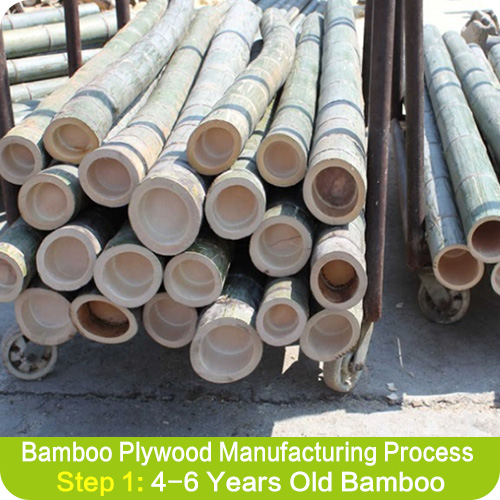


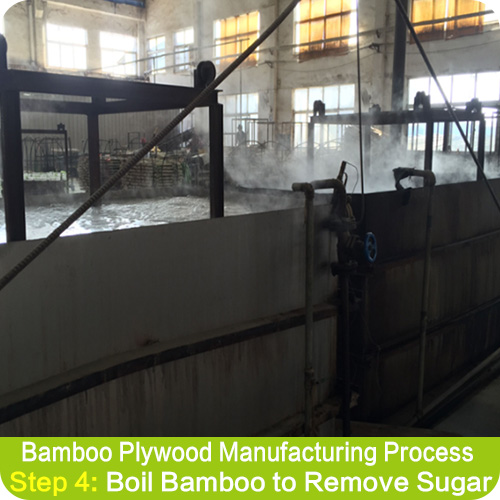
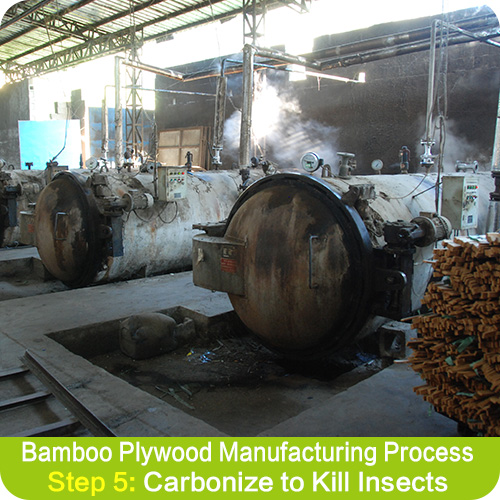
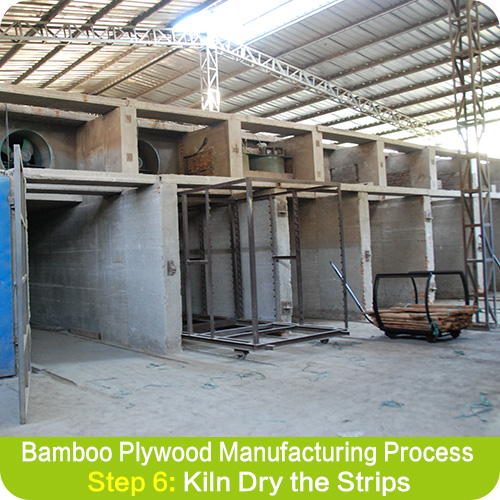
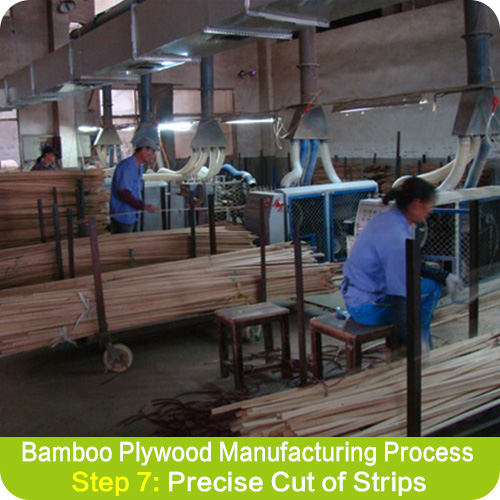
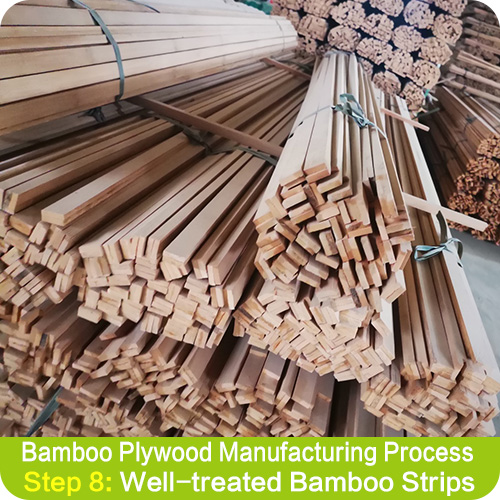

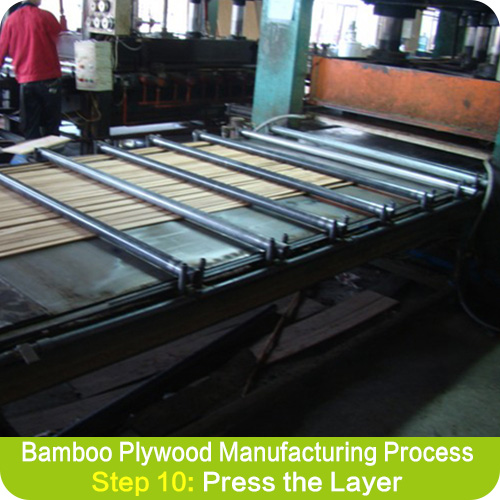
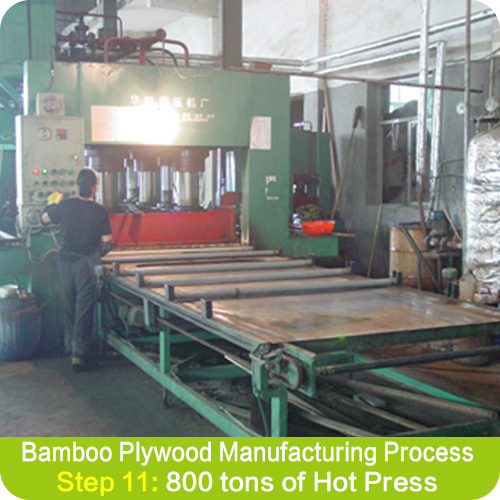
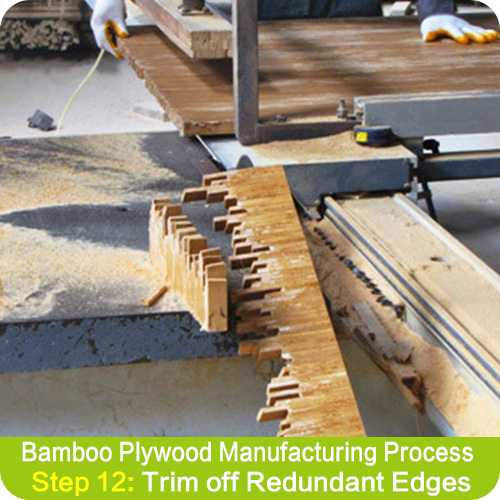
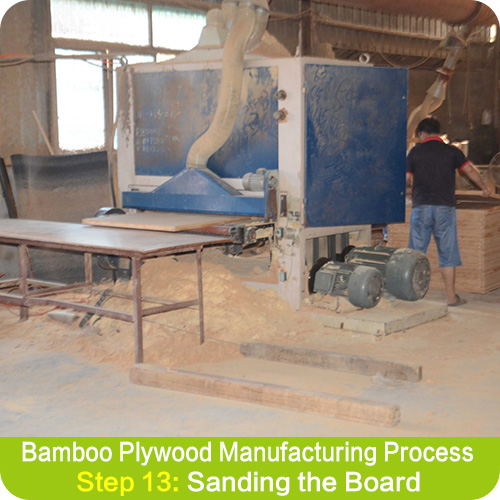
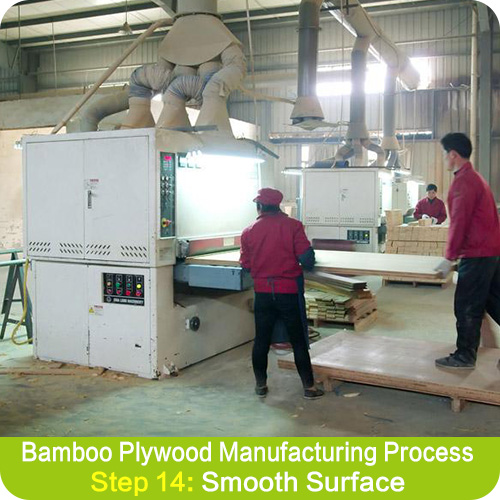
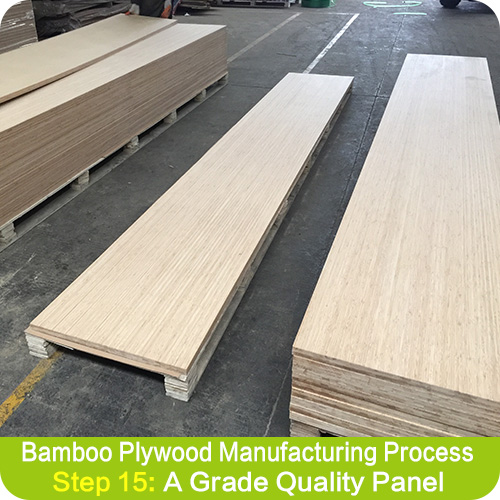
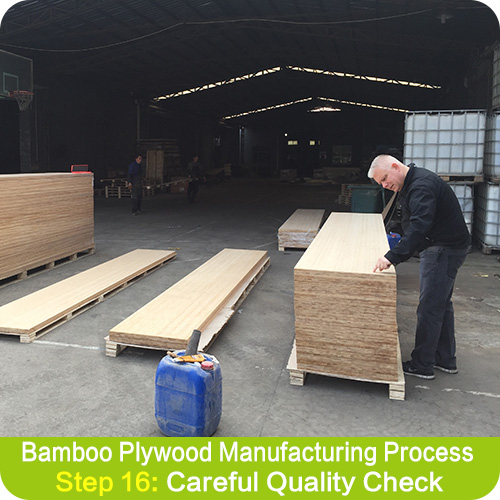
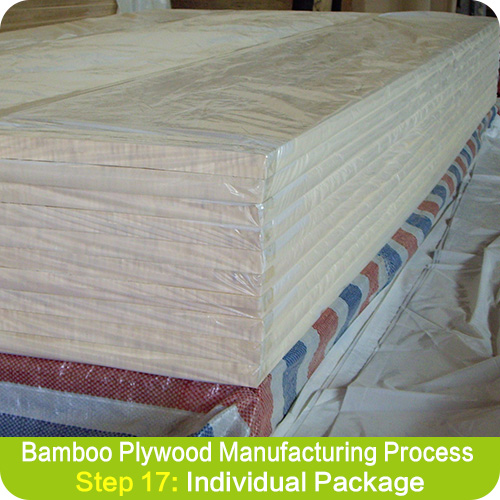

Bamboo plywood offers several compelling advantages over traditional wood plywood, making it an increasingly popular choice for both commercial and residential projects. Here are some of the key benefits:
1. Environmental Sustainability: One of the most significant advantages of bamboo plywood is its eco-friendliness. Bamboo is a highly sustainable and rapidly renewable resource, capable of reaching maturity in just 3-5 years, compared to hardwoods that may need anywhere from 20 to 50 years. This rapid growth cycle allows bamboo forests to be replenished much faster, reducing the impact of deforestation and helping in the conservation of hardwood forests.
2. Durability and Strength: Bamboo plywood possesses exceptional natural strength and durability that often surpasses that of traditional hardwoods. This is due to the dense fibers in bamboo, which give it excellent resistance to wear and tear. Furthermore, bamboo plywood has a high tensile strength, making it an ideal material for high-traffic areas and applications demanding longevity.
3. Dimensional Stability: Bamboo plywood exhibits superior dimensional stability. It is less prone to warping and twisting compared to traditional wood, mainly when properly treated and manufactured. This stability is particularly beneficial in environments with fluctuating humidity or temperature changes, ensuring the longevity and consistent appearance of the bamboo products.
4. Aesthetic Appeal: Bamboo plywood has a unique look that sets it apart from conventional wood plyboards. It provides a sleek, contemporary aesthetic that can complement a wide range of design styles. The natural grain patterns and warm tones of bamboo can add character and warmth to any space. Additionally, it can be finished in various ways to enhance its natural beauty or achieve a particular look.
5. Versatility: The versatility of bamboo plywood is another significant advantage. It can be used in a wide range of applications, from flooring, cabinetry, and furniture to wall coverings and ceiling panels. Its flexibility and ease of cutting and shaping allow for creative and innovative uses in architectural and design projects.
6. Moisture Resistance: Bamboo has a natural resistance to moisture and water, making bamboo plywood a suitable choice for kitchen and bathroom applications, where exposure to moisture is common. When properly treated and sealed, it can withstand these environments better than many types of traditional wood, reducing the risk of warping or swelling.
7. Health and Safety: Bamboo plywood is often made with less toxic adhesives and finishes compared to those used in some conventional wood plyboards. This aspect makes it a healthier choice, particularly important for indoor air quality. Bamboo does not typically emit volatile organic compounds (VOCs) or other harmful chemicals, contributing to a safer and more comfortable indoor environment.
8. Economical: Although the cost can vary depending on the quality and specific type of bamboo plywood, it generally offers a cost-effective alternative to many hardwoods. The efficiency of bamboo cultivation and processing can result in more affordable prices for consumers, making sustainable building materials more accessible.
Compared with traditional hardwood plywood, it's clear why bamboo plywood is becoming a preferred material for builders, architects, and homeowners seeking sustainable, durable, and aesthetically pleasing options for their construction and design projects.


 皖公网安备 34180202000049号
皖公网安备 34180202000049号